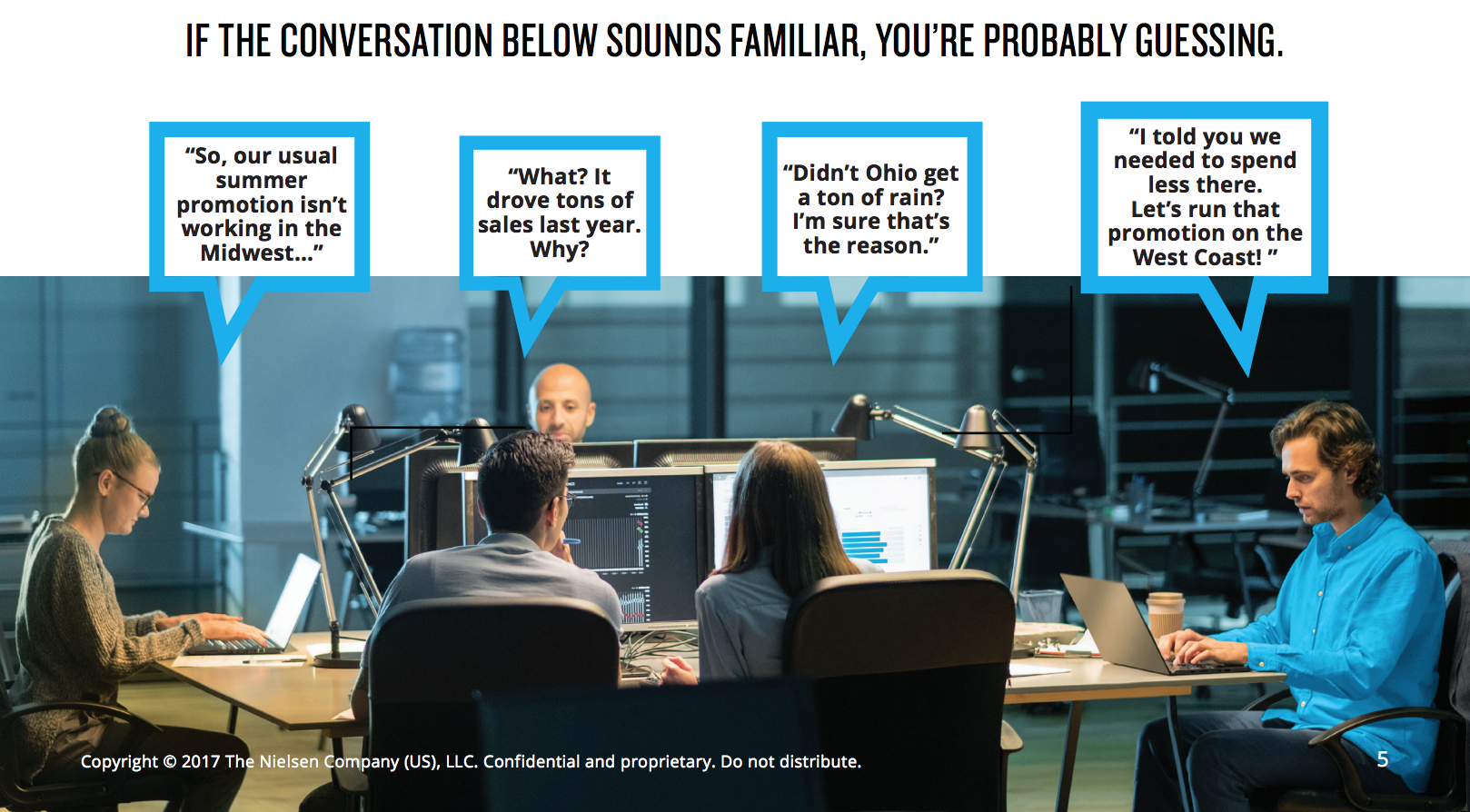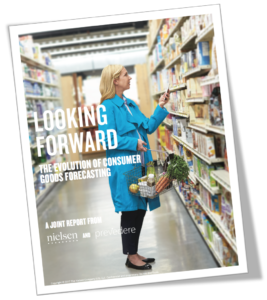Last Updated: February 25, 2022
The Ability to Predict Consumer Goods Forecasting is an Evolving Challenge
Companies that can identify and proactively meet true market demand are poised to take the lead in their markets. This is especially true in the fast-moving consumer goods (FMCG) forecasting landscape, where customers have a plethora of product, brand, and retail channel options available. However, far too many companies are still looking backward, unable to anticipate and plan for the future.
Future performance is driven by a multitude of factors, from internal initiatives such as product innovation and marketing to external drivers such as consumer spending power. Companies often fail to include the latter in demand forecasts, resulting in significant errors that impact the bottom line.
Evolving Marketplace
According to the IBF, for every $1 billion in sales, a 1% over-forecast error can result in losses between $5.5 million to $7 million annually. Rather than focusing on “why did this (growth or decline) happen,” companies need to look ahead at will likely happen going forward to avoid the risk of these substantial losses.
Because of the rapidly evolving market, some of the largest manufacturers are struggling to maintain earnings, while smaller companies with a greater ability to disrupt their business models are growing faster than ever. The “big fish” from the small pond can no longer dismiss their “small fish” competition.

For companies to improve consumer goods forecasting performance and capitalize on growth opportunities, they must maintain a holistic view with an understanding that the marketplace will continue evolving. For example, American consumers have become 5.3% less likely to respond to a promotion than they were three years ago. This means large marketing budgets are no longer a safe-haven separating larger, established brands from the up-and-coming disruptors.
Planning for the future
Since competition and retail channels are changing each year, planning for the future requires an ongoing view of factors directly impacting your business. For example, FMCG retailers and manufacturers are seeing that the speed at which they can get products into consumers’ hands is directly impacting sales.
The rapid pace of change in retail from factors like e-commerce growth and newer business models like subscription services are making it hard to determine where consumer preferences will lean next. If FMCG companies do not have a clear understanding of their evolving competition and channels, they’ll continue to miss out on opportunities to grow. You can read additional details in the latest Nielsen and Prevedere FMCG report here.
Considering that over 5,000 retailers selling consumer goods from apparel to electronics closed their doors during the first half of 2017 alone, companies must determine where their market opportunities lie. Unless consumer goods companies can view their business holistically and learn how their companies fit within the broader marketplace both today and in the future, 2018 will be yet another challenging year for consumer goods.

To help FMCG companies determine why they grew or experienced a decline and how to capitalize on opportunities ahead, Prevedere teamed up with Nielsen to create a joint report address the critical questions on the evolution of consumer goods forecasting. Download it here.